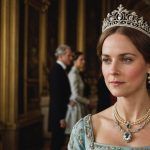France’s fashion legacy stands as a powerful testament to its ability to blend rich heritage with constant reinvention. Paris’s rise as the epicentre of haute couture established a distinctive style that continues to inspire worldwide. As global shifts reshape the industry, French fashion houses confront the dual challenge of honoring tradition while embracing innovation, ensuring their influence remains both enduring and dynamic.
France’s Legacy as a Fashion Capital
France’s fashion legacy is deeply rooted in its history, intertwining with the rise of European culture and aristocracy. The country’s role as a global fashion leader began as early as the 17th century, when French royalty, especially under King Louis XIV, elevated the importance of dress codes and court fashion. This period marked the birth of French fashion history, setting standards that would influence global trends.
Also to discover : Discover stylish hugo boss sandals for men and women
The Parisian influence became unmistakable with the establishment of haute couture, a hallmark of French craftsmanship defined by custom-fitted high-end clothing. Paris quickly emerged as the undisputed epicentre of haute couture, attracting artists, designers, and patrons eager to define luxury and innovation in garment creation. This influence is crucial in understanding why Paris still holds such esteem in the fashion world today.
Several key milestones solidified France’s fashion identity. The founding of the Chambre Syndicale de la Haute Couture in the 19th century formalized haute couture’s position. Designers like Coco Chanel and Christian Dior revolutionized fashion by introducing elegance married with wearable art, reinforcing France’s prestigious reputation. These milestones underscore why French fashion history continues to inspire designers worldwide, maintaining its powerful legacy as both a cultural and economic force.
This might interest you : Elevate your urban style with functional techwear ponchos
For readers interested in the broader cultural context, exploring this legacy offers insights into how France’s reputation as a fashion capital remains resilient despite global shifts. Visit this link for more information.
Adapting Tradition: French Fashion in a Changing Global Landscape
French fashion adaptation is a complex process where heritage meets modern demands. Leading French fashion houses skillfully balance tradition and innovation by preserving iconic craftsmanship while integrating contemporary designs and sustainable practices. This balance allows them to stay relevant without losing the essence that defines French couture.
Globalization significantly influences this adaptation. French brands face opportunities and challenges due to expanding emerging markets. These new consumers bring fresh tastes and expectations, requiring French fashion to evolve while maintaining its distinct identity. Moreover, fast fashion’s rise pressures French houses to accelerate production cycles and adopt digital tools for efficiency.
The modern industry shifts, especially digital transformation, have reshaped how French brands engage with customers—from online showcases to social media marketing. While this offers broader reach, it also demands constant innovation. Thus, French fashion stands at a crossroads: embracing technological advances while safeguarding its rich heritage. Visit this link for more information.
Trends and Influencers Redefining French Fashion
The landscape of French fashion trends is evolving rapidly, shaped by both legendary designers and emerging talents. Traditional Parisian elegance continues to influence collections, but new voices bring a fresh, dynamic perspective that challenges conventions while respecting heritage.
Key figures in the scene include iconic designers who maintain their status by innovating classic styles, alongside younger creators who infuse boldness and diversity. These designers are setting the tone for upcoming seasons, blending craftsmanship with contemporary aesthetics in ways that redefine what French fashion represents today.
Social media and digital platforms play a crucial role in amplifying these trends and key figures. Influencers with significant followings help disseminate styles beyond Parisian runways, making French fashion accessible worldwide. This digital presence shifts how fashion is experienced—from exclusive events to everyday inspiration—allowing trends to circulate faster and influencers to become vital players in the industry.
Visit this link for more information on how these elements combine to keep French fashion at the forefront of global style innovation.
Case Studies: French Brands Navigating Global Challenges
French fashion brands remain pivotal in shaping luxury and global strategy.
Louis Vuitton exemplifies how legacy and innovation blend to confront global challenges. Its success lies not only in heritage but also in aggressive digital transformation and tailored local marketing. The brand consistently balances its timeless luxury appeal with modern consumer expectations, carefully adapting its global strategy to diverse markets. This flexibility has allowed Louis Vuitton to maintain its leadership amid shifting industry landscapes.
Similarly, Chanel’s evolution demonstrates a nuanced approach to expanding global influence. The brand has broadened its footprint beyond traditional luxury, incorporating contemporary cultural narratives while preserving exclusivity. Chanel’s global strategy emphasizes craftsmanship and storytelling, which resonate worldwide without diluting brand identity. This approach highlights how French fashion brands leverage legacy alongside proactive market engagement.
Emerging French fashion brands are innovating sustainability, transforming challenges into opportunities. These brands prioritize eco-conscious materials and transparent supply chains, integrating these values into their global strategy. Their fresh perspective introduces new luxury dimensions aligned with evolving consumer demands, ensuring relevance beyond heritage. This sustainability focus complements the broader efforts by established houses like Louis Vuitton and Chanel to address environmental and social imperatives.
Visit this link for more information.
Future Outlook for France’s Global Fashion Leadership
France continues to shape the future of French fashion by actively embracing innovation and sustainability to preserve its international relevance. The country’s fashion industry envisions a dynamic role, balancing heritage with modern demands to stay at the forefront of global trends.
One key aspect influencing France’s position is the focus on sustainability. As environmental concerns intensify across markets, French designers and brands are committing to eco-friendly practices, from sourcing materials responsibly to reducing waste in production. This shift not only responds to consumer expectations but also positions France as a pioneer in sustainable luxury, reinforcing its global leadership.
Technology will further impact the future of French fashion. Advances such as 3D printing, digital tailoring, and virtual runways are anticipated to revolutionize how fashion is created and experienced. France is projected to integrate these tools to enhance creativity and efficiency, maintaining its stature as a trendsetter by leveraging high-tech innovation alongside traditional craftsmanship.
To remain influential, France may pursue several paths: strengthening collaborations between technology firms and fashion houses, investing in sustainable research, and expanding its cultural influence through global events. These strategies aim to balance international relevance with evolving consumer values and industry challenges.
Visit this link for more information.











